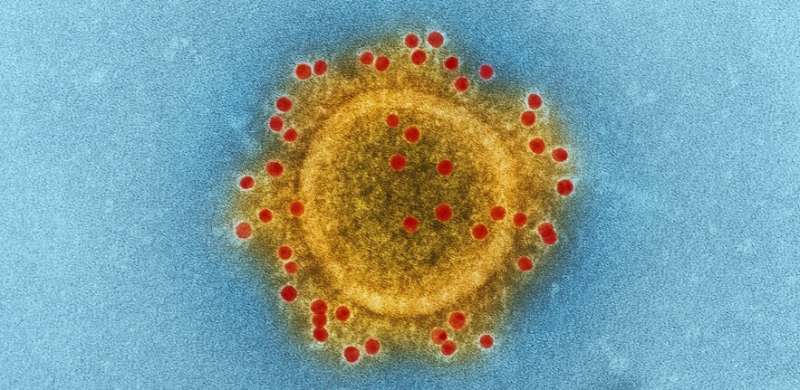Credit: University of Cambridge
A team of researchers at the University of Cambridge has developed a new experimental and theoretical platform to study how viruses evolve while spreading within an organism.
In the study, published in Physical Review X, the researchers used experimental data and simulations of a phage-bacteria ecosystem to uncover that viral expansions can transition from 'pulled'—where the expansion is led by the pioneering viral particles at the very edge of the population, to 'pushed', where the expansion is driven by viruses arising behind the front and within the infected region.
Crucially, pushed waves are known to retain genetic diversity for much longer than their pulled counterparts, and these results have confirmed that this is also the case in viral expansions.
This new understanding suggests that viral expansions might be much more adaptable than previously thought and could help to build better models to predict the evolution of viruses in infected organisms.
"Pushed expansions are normally observed in populations that display cooperative behavior, like herds of animals. Yet, no cooperation among these viruses is known to occur," explained first author Michael Hunter from Cambridge's Cavendish Laboratory.
A bacterial colony (droplet on the left) being eaten up by the phage (droplet on the right). Credit: Diana Fusco Lab - Cavendish Laboratory, University of Cambridge
"Here, we have used a model ecosystem of a bacteria-infecting virus, phage T7, and its host, E. coli, to demonstrate that pushed waves occur in viral expansions even if no explicit cooperation among the viral particles exists."
"Our observations show that the transition from pulled to pushed expansions spontaneously arises from the feedback between virus and host dynamics, whereby the viral dispersal depends on the host density, which, in turn, is continuously modified by the virus as the expansion advances."
The team uncovered two independent physical mechanisms that contribute to this virus-host feedback and determine the parameters that can affect the transition between the different types of expansions. The first mechanism stems from volume-excluded interactions between virus and host in crowded environments, as host cells represent physical obstacles that impede viral diffusion. The second arises from the viral incubation period during which the virus is trapped inside the host cell and is unable to diffuse.
"Our results point to the phage-bacteria system as a highly controllable platform to experimentally investigate the dynamics of expanding populations with density-dependent dispersal," said senior author Dr. Diana Fusco, also from the Cavendish Laboratory.
"Beyond phages, our findings show that viral expansions can retain genetic diversity much longer than previously thought, suggesting that viral populations expanding in an infected organism may be very adaptable to changes in the environment. This realization will help in building better models for viral growth and evolution in infected tissues and organisms."
More information: Michael Hunter et al, Virus-Host Interactions Shape Viral Dispersal Giving Rise to Distinct Classes of Traveling Waves in Spatial Expansions, Physical Review X (2021). DOI: 10.1103/PhysRevX.11.021066
Journal information: Physical Review X
Provided by University of Cambridge
























